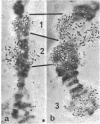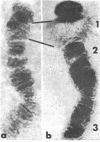Abstract
The injection of ecdysone (molting hormone) into chironomid larvae is known to result in the stimulation of specific gene activities (increased RNA synthesis). The morphological manifestation of this gene activation is the formation of a puff. Cytological and autoradiographic analysis of several regions of the salivary gland chromosomes of Chironomus tentans revealed that ecdysone also stimulates Balbiani ring 1. In contradistinction to the puffs, the Balbiani rings are tissue specific and account for a significant percentage of the cell's non-nucleolar RNA.
The application of juvenile hormone results in a decreased activity of Balbiani ring 1, suggesting that the two hormones may act antagonistically. In addition, juvenile hormone induces a puff at chromosome region I-19-A and this puff becomes less active after a short-term treatment with ecdysone. These data demonstrate an effect of juvenile hormone on puffing and are the first to demonstrate activation of a Balbiani ring by ecdysone.
Full text
PDF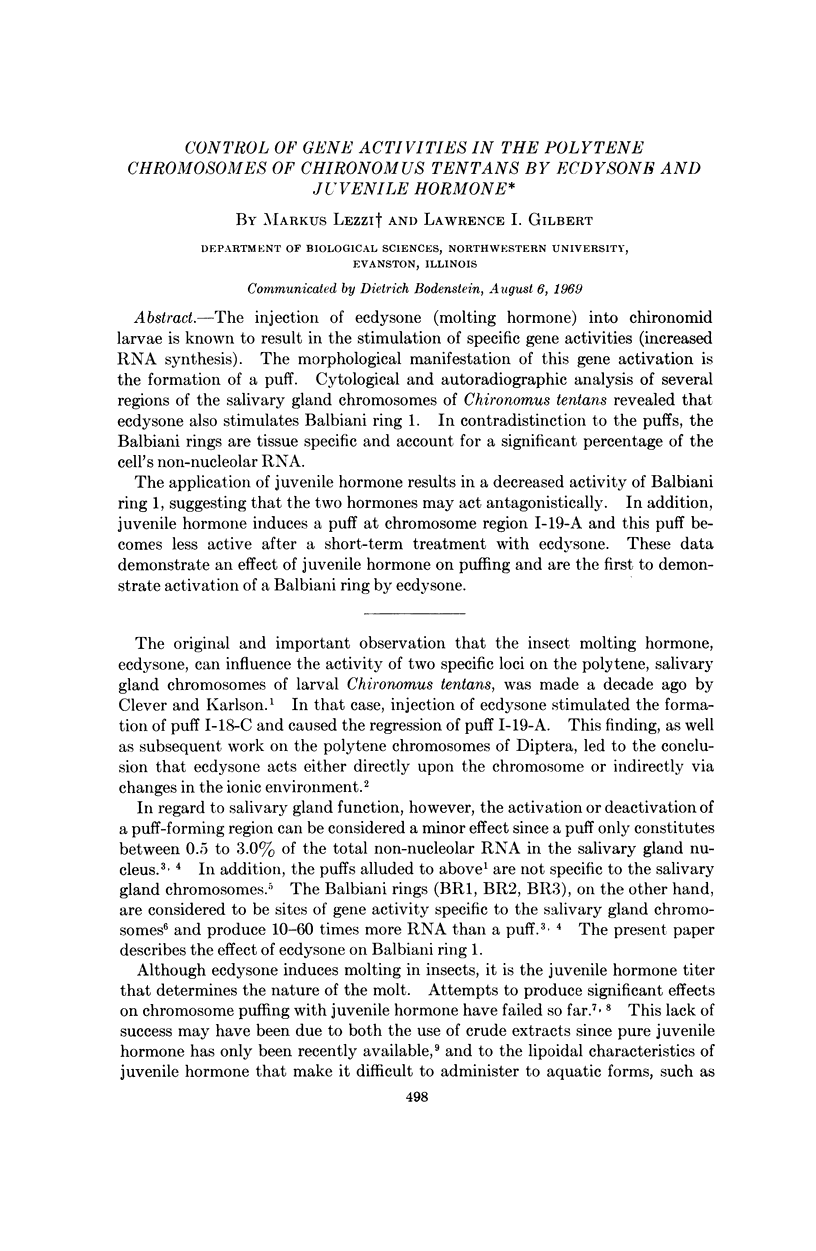
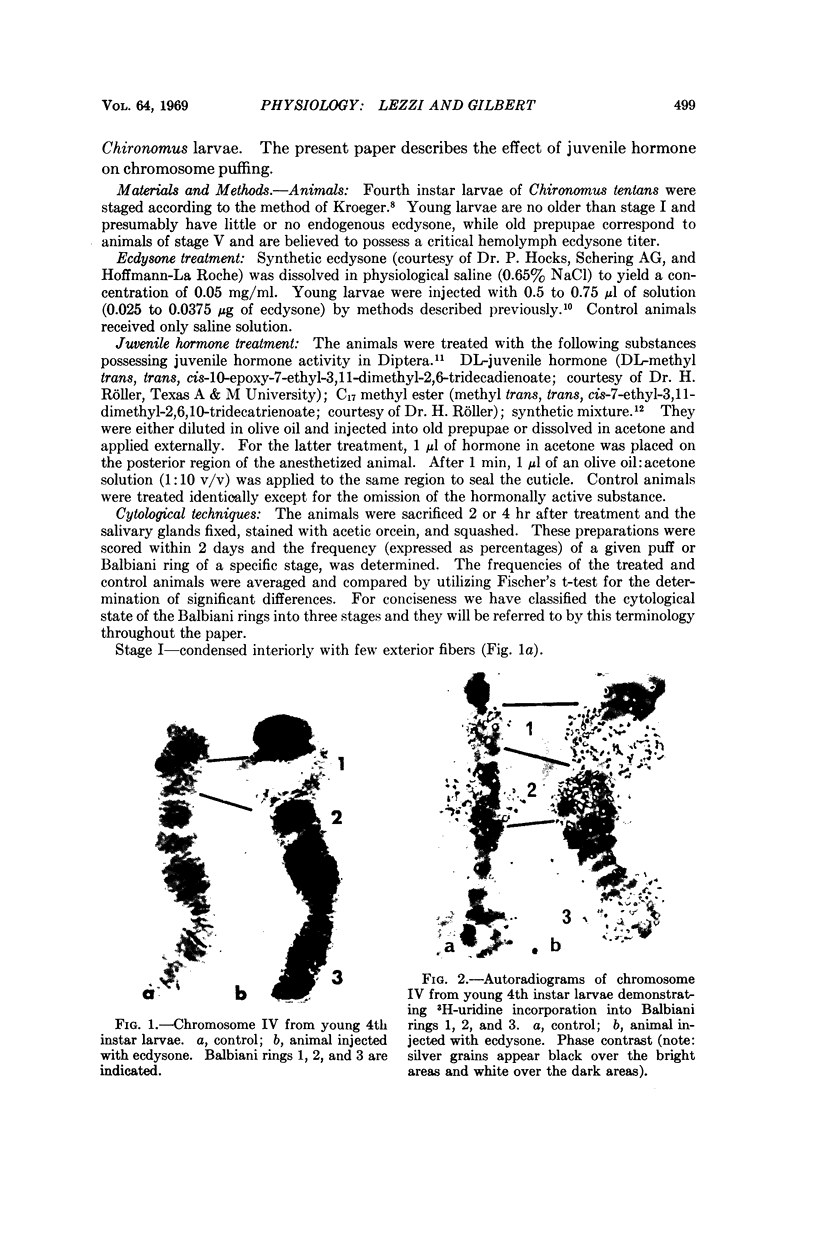
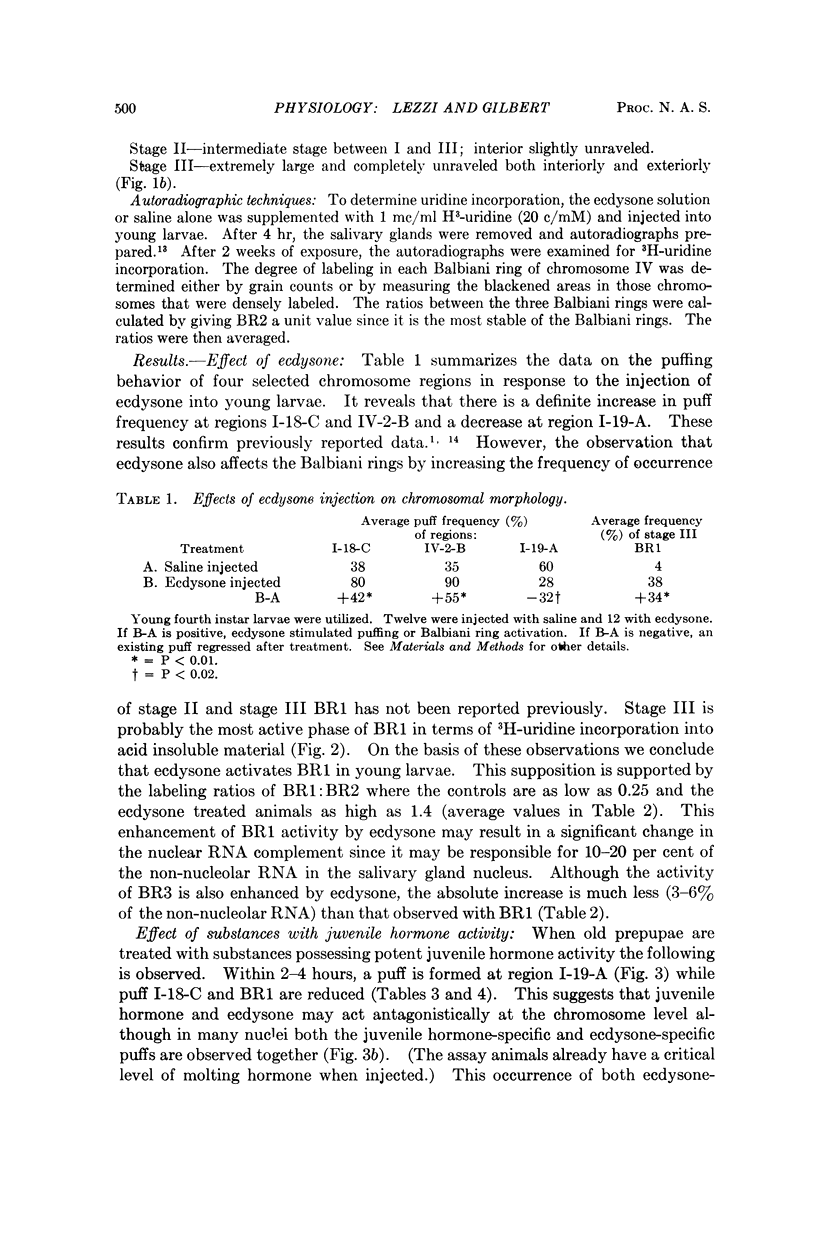
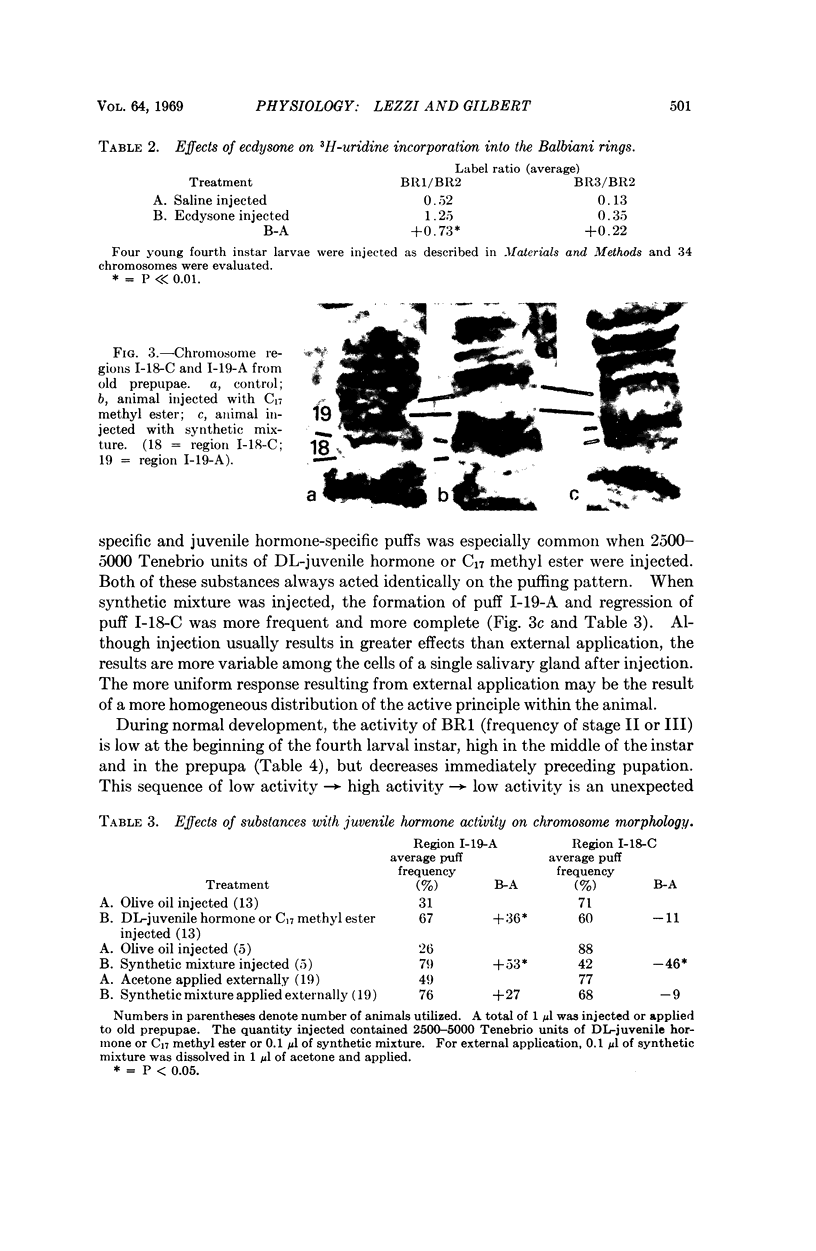
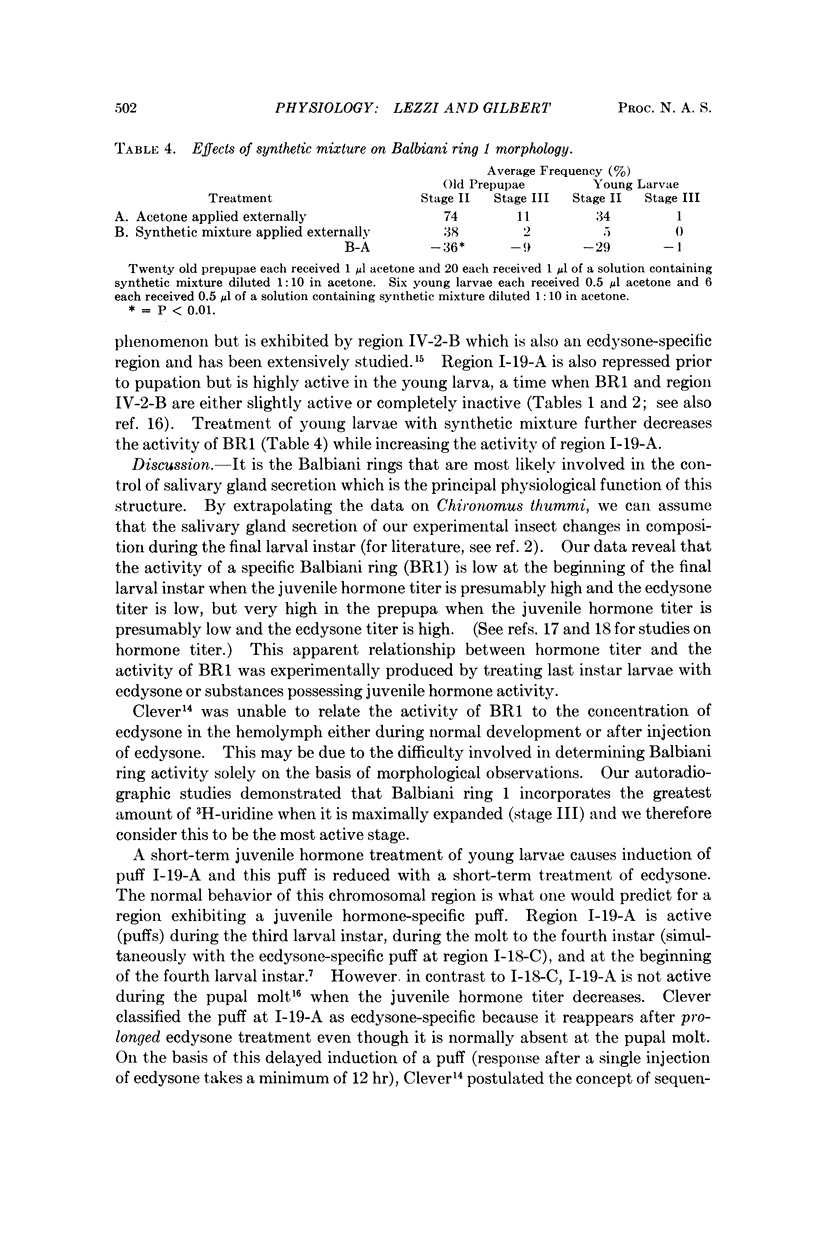
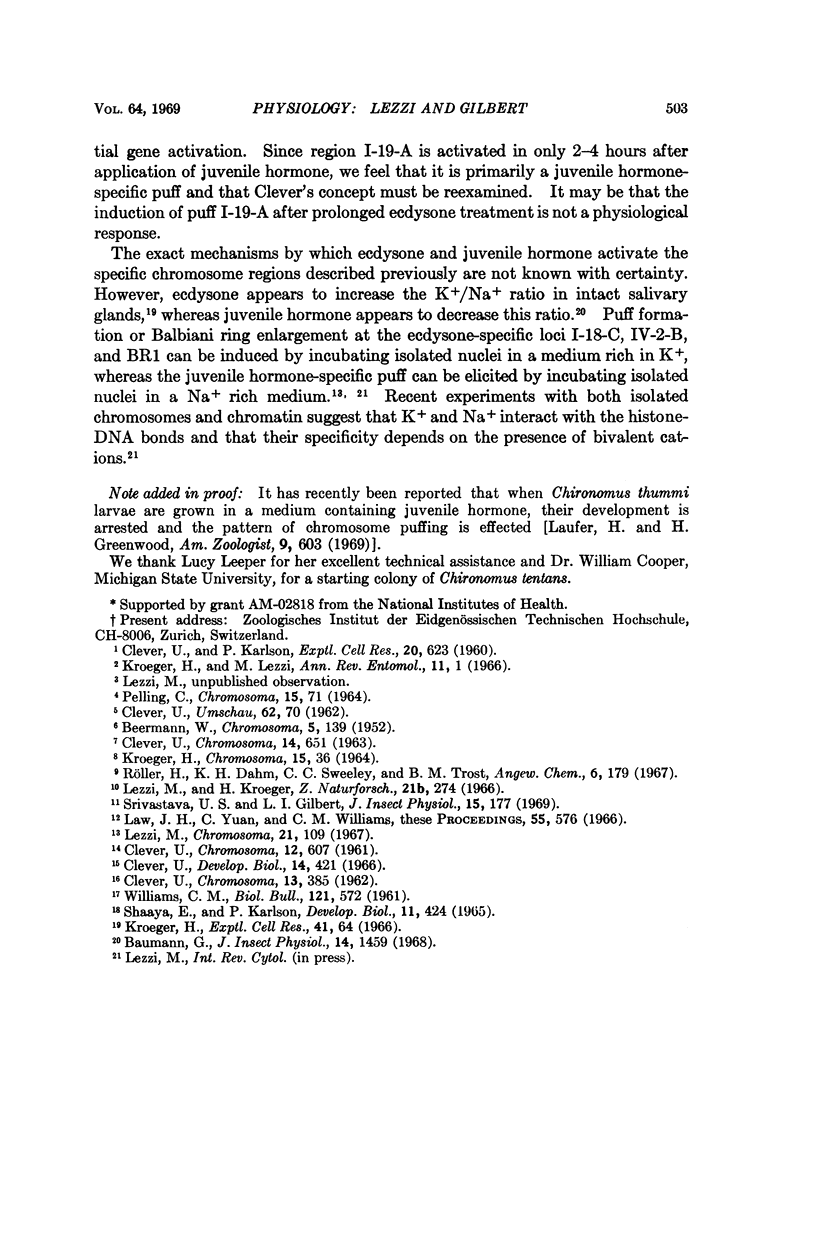
Images in this article
Selected References
These references are in PubMed. This may not be the complete list of references from this article.
- CLEVER U., KARLSON P. [Induction of puff changes in the salivary gland chromosomes of Chironomus tentans by ecdysone]. Exp Cell Res. 1960 Sep;20:623–626. doi: 10.1016/0014-4827(60)90141-5. [DOI] [PubMed] [Google Scholar]
- CLEVER U. [Gene activity in the giant chromosomes of Chironomus tentans and its relation to development. I. Gene activation by ecdysone]. Chromosoma. 1961;12:607–675. doi: 10.1007/BF00328945. [DOI] [PubMed] [Google Scholar]
- KROEGER H. ZELLPHYSIOLOGISCHE MECHANISMEN BEI DER REGULATION VON GENAKTIVITAETEN IN DEN RIESENCHROMOSOMEN VON CHIRONOMUS THUMMI. Chromosoma. 1964 Apr 1;15:36–70. doi: 10.1007/BF00326914. [DOI] [PubMed] [Google Scholar]
- Kroeger H., Lezzi M. Regulation of gene action in insect development. Annu Rev Entomol. 1966;11:1–22. doi: 10.1146/annurev.en.11.010166.000245. [DOI] [PubMed] [Google Scholar]
- Kroeger H. Potentialdifferenz und Puff-Muster. Elektrophysiolgische und cytologische Untersuchungen an den Speicheldrüsen von Chironomus thummi. Exp Cell Res. 1966 Jan;41(1):64–80. doi: 10.1016/0014-4827(66)90547-7. [DOI] [PubMed] [Google Scholar]
- Law J. H., Yuan C., Williams C. M. Synthesis of a material with high juvenile hormone activity. Proc Natl Acad Sci U S A. 1966 Mar;55(3):576–578. doi: 10.1073/pnas.55.3.576. [DOI] [PMC free article] [PubMed] [Google Scholar]
- Lezzi M. Spezifische Aktivitätssteigerung eines Balbianiringes durch Mg2+ in isolierten Zellkernen von Chironomus. Chromosoma. 1967;21(1):109–122. doi: 10.1007/BF00330549. [DOI] [PubMed] [Google Scholar]
- PELLING C. RIBONUKLEINSAEURE-SYNTHESE DER RIESENCHROMOSOMEN. AUTORADIOGRAPHISCHE UNTERSUCHUNGEN AN CHIRONOMUS TENTANS. Chromosoma. 1964 Apr 1;15:71–122. doi: 10.1007/BF00326915. [DOI] [PubMed] [Google Scholar]
- Shaaya E., Karlson P. Der Ecdysontiter während der Insektenentwicklung. IV. Die Entwicklung der Lepidopteren Bombyx mori L. und Cerura vinula L. Dev Biol. 1965 Jun;11(3):424–432. doi: 10.1016/0012-1606(65)90048-5. [DOI] [PubMed] [Google Scholar]



